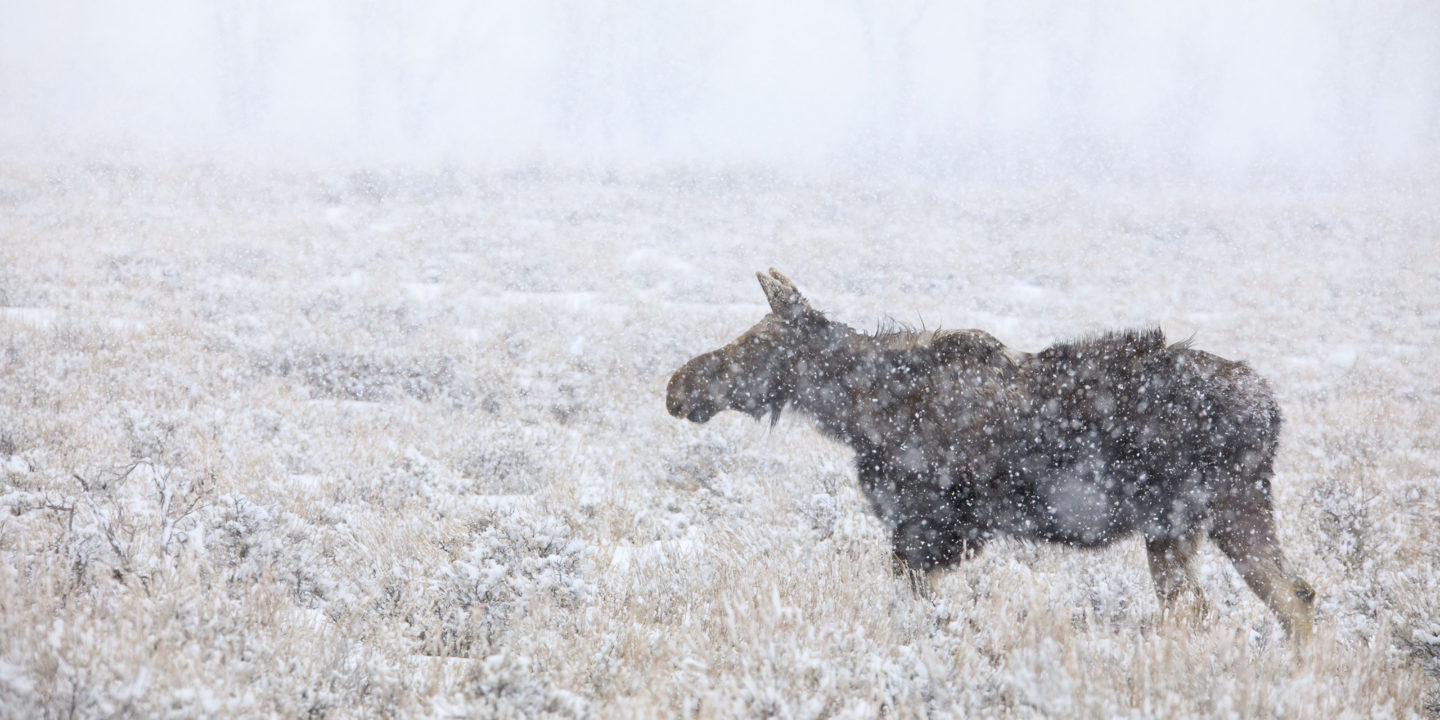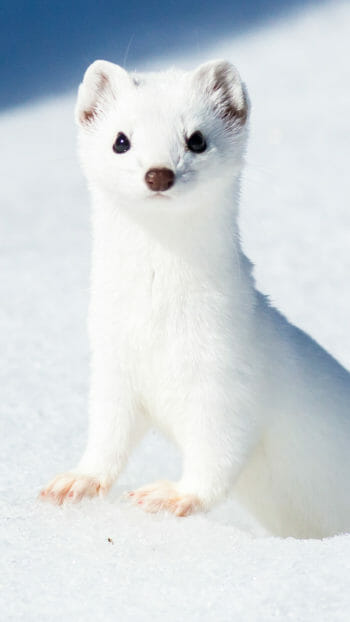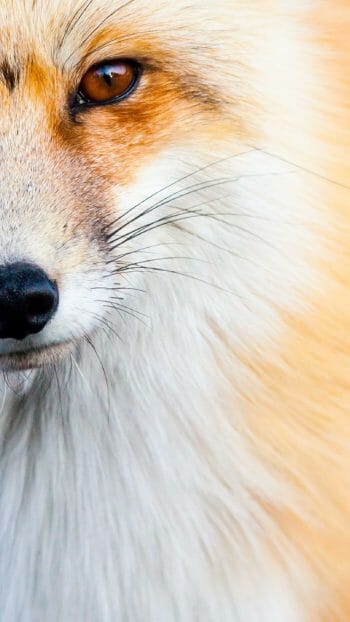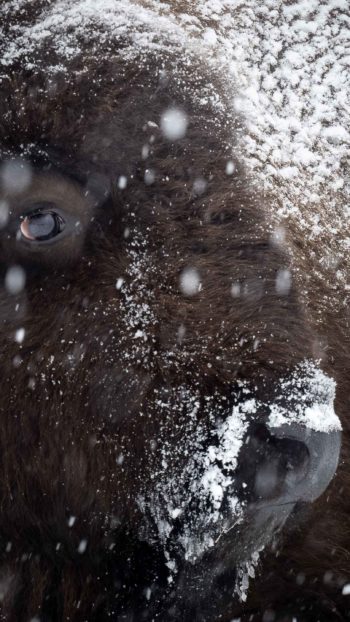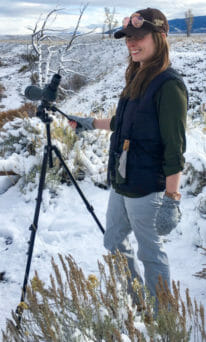Winter in Jackson Hole is a season unlike any other. As snow blankets the valley floor and the jagged Teton Range rises in sharp contrast against crisp blue skies, the region transforms into a serene wonderland filled with quiet beauty and rich ecological activity. For visitors seeking a true sense of the Greater Yellowstone Ecosystem, a winter tour offers the chance to explore landscapes shaped by snow and ice, observe wildlife in their seasonal rhythms, and experience the stillness of one of America’s most iconic destinations.
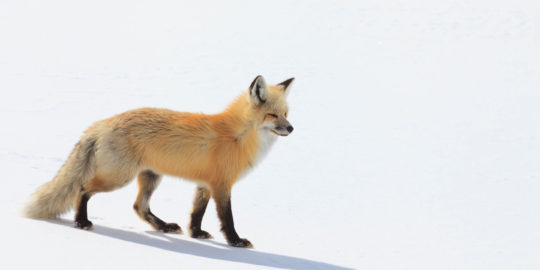
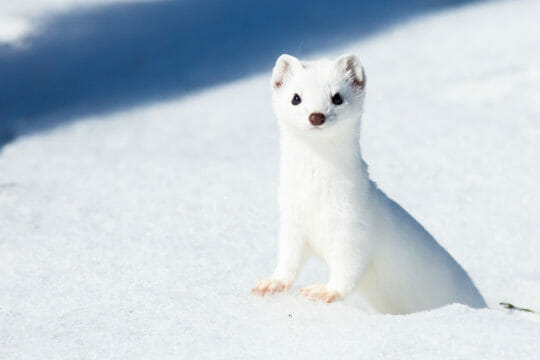
The Winter Season in Jackson Hole
The winter season in Jackson Hole runs from late November through early April, when average daily temperatures hover between 0°F and 20°F, and snow depths can exceed several feet. At an elevation of just over 6,200 feet in the valley and more than 13,000 feet at the highest Teton peaks, altitude plays an important role in shaping both the landscape and the ecology. Frozen rivers carve through willow-lined meadows and crisp mountain air heightens the senses as you venture into this snowy wilderness.
Altitude and Winter Landscapes
At higher elevations, deep snowpack and steep terrain create a dramatic environment for both wildlife and travelers. The mountains dominate the skyline, while the valley floor offers a mix of meadows, cottonwood groves, and sagebrush flats, each habitat serving as essential winter range for animals. The varied landscape ensures that winter excursions provide a constantly changing backdrop of scenery and wildlife encounters.
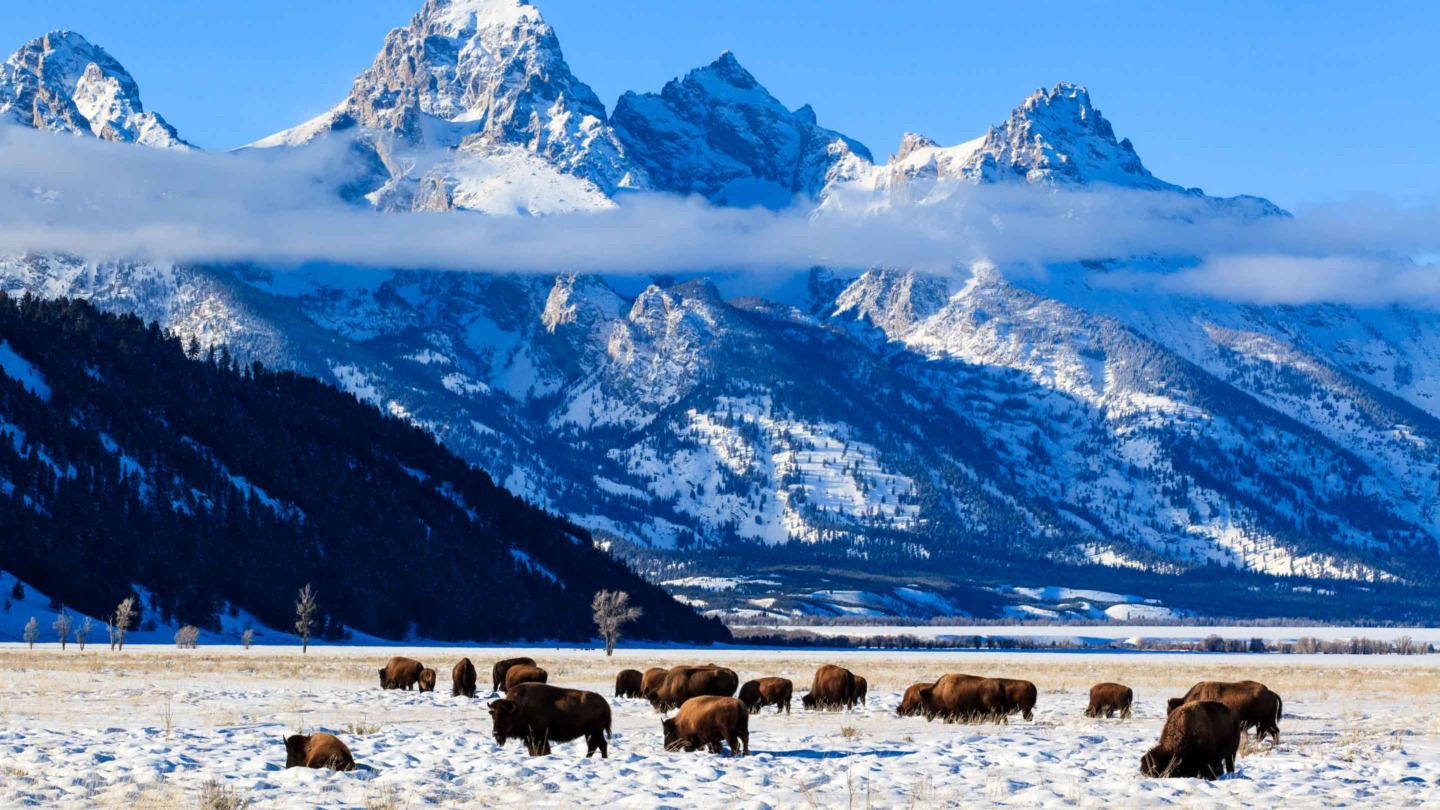
Winter Ecology in Jackson Hole
Winter ecology in Jackson Hole is dynamic and resilient. Mammals like elk, moose, and bison adapt to the cold by migrating to lower elevations or congregating in large herds where food is accessible. Predators such as wolves and coyotes remain active, their movements often easier to track against fresh snow. Bird life is equally captivating in winter. Bald eagles soar over frozen rivers, trumpeter swans gather in open water, and ravens thrive on their adaptability. Even plants have evolved to endure this season; lodgepole pines and cottonwoods shed weight under heavy snow, while willows along the riverbanks provide essential forage for browsing moose.

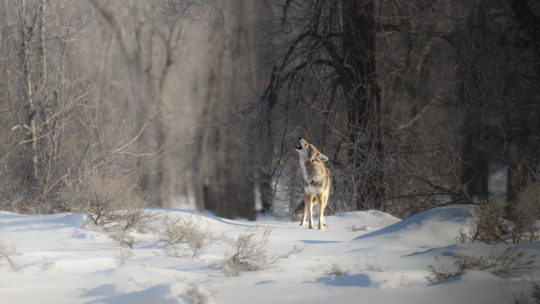
Exploring Grand Teton National Park
Much of this ecological drama unfolds within Grand Teton National Park. Though some roads are closed in winter, the park remains accessible by vehicle along its main corridors. The snowy peaks, frozen lakes, and open valleys provide stunning backdrops for wildlife watching and photography.
The National Elk Refuge
Nearby, the National Elk Refuge offers one of the most memorable winter spectacles in North America. Each year, thousands of elk migrate down from the mountains to spend the season in this protected area, creating extraordinary opportunities to witness one of the largest elk herds on the continent.
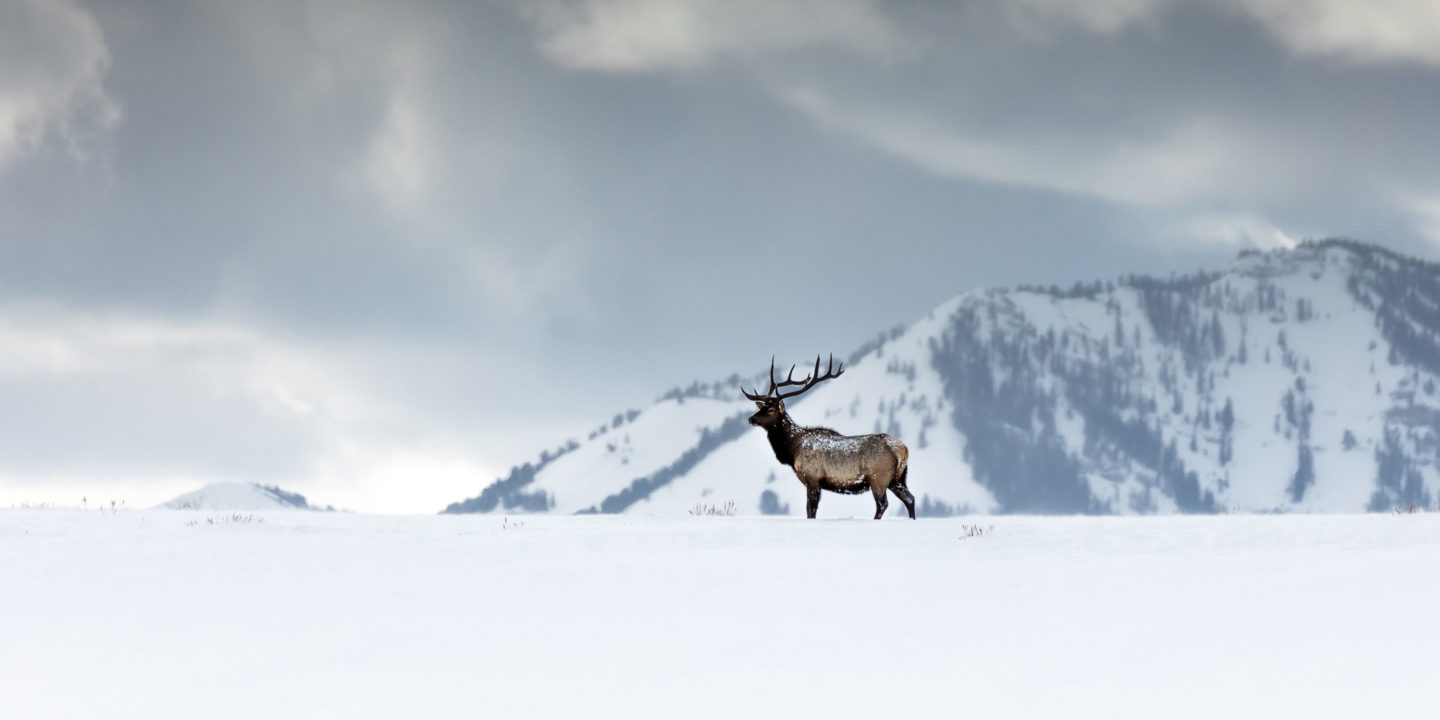
Dressing for a Winter Day in Jackson Hole
Spending a day outside in Jackson Hole during winter requires preparation, and dressing properly is key. Guests are encouraged to wear warm, layered clothing that can be adjusted as temperatures shift throughout the day. Insulated boots, gloves, and hats are essential, while hand warmers and scarves can add extra comfort. The vehicles will be warm and cozy, but being prepared ensures a comfortable and enjoyable day in the elements.
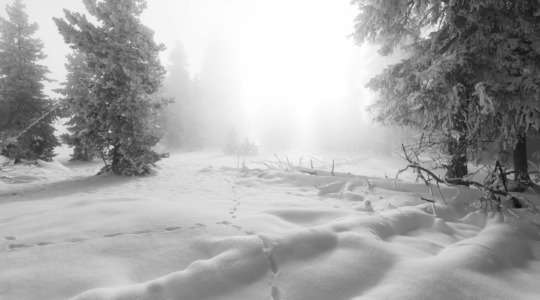
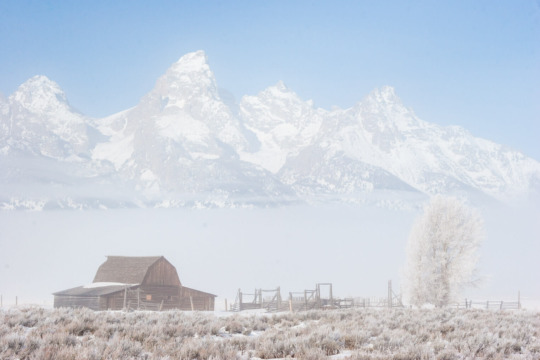
Getting to Jackson Hole in Winter
Despite its remote feel, Jackson Hole is remarkably accessible in winter. Jackson Hole Airport, located just minutes from town and inside Grand Teton National Park, offers direct flights from major cities across the United States. This convenience allows visitors to step off the plane and almost immediately find themselves in the heart of the mountains, ready to begin their winter safari.
Jackson Hole in winter is a destination of contrasts: rugged peaks softened by snow, wildlife surviving in harsh conditions, and travelers finding warmth in shared experiences with expert guides. Whether watching elk move across a frosted valley, snowshoeing through still forests, or exploring the iconic landscapes of Grand Teton National Park, a winter tour here is a chance to see nature at its most resilient and breathtaking.
FAQs
What wildlife can I see on a winter tour in Jackson Hole?
During the winter months, guests often see elk on the National Elk Refuge, moose browsing in cottonwood groves, bison moving through snow-covered meadows, and bighorn sheep on rocky slopes. Bald eagles, trumpeter swans, and even predators like wolves and coyotes may also be spotted.
Are Jackson Hole winter tours family-friendly?
Yes, winter safaris are designed for all ages. Heated vehicles, professional naturalist guides, and flexible itineraries make these tours comfortable and engaging for families, including children.
Do winter tours include access to Grand Teton National Park?
Yes, tours travel along open corridors in Grand Teton National Park that remain accessible during the winter months. These routes offer breathtaking scenery and excellent opportunities for wildlife viewing.
What should I wear on a winter wildlife tour?
Guests should dress in warm, layered clothing, including insulated boots, gloves, and a hat. Temperatures can range from 0°F to 20°F, and layers help ensure comfort. Heated vehicles provide additional warmth throughout the day.
How do I get to Jackson Hole in the winter?
Jackson Hole is served by Jackson Hole Airport (JAC), located inside Grand Teton National Park. The airport offers direct flights from major U.S. cities, making it one of the most convenient mountain destinations in North America.

